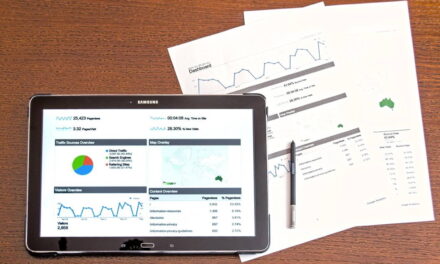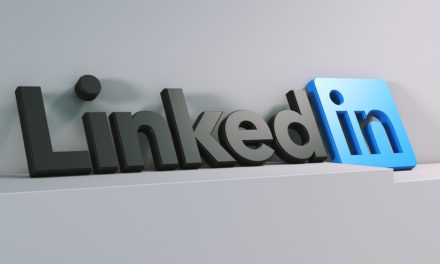Proper planning and preparation is often the key to a successful pay per click ads campaign. Too many companies burn out their budget while testing and tweaking their ads well after they have gone live. In order to maximize your return on investment, there are a few things you need to do before you start with your Google Ads campaign. Just follow the checklist given below and you will have a much better chance of success within your budget.
1) Understand Your Goal: Now some may feel their goal is quite obvious – get more sales. Increase in sales is obviously the ultimate goal of the company. However, when it comes to your Google Ads campaign, it is not that straightforward.
You need to understand the goal of your Google Ads campaign. This may not be simply to increase sales. To truly understand what we are talking about, let us take the following example of two companies.
Company A sets up a new PPC ad campaign. They add their target audience demographics, add keywords specific to their business and write appropriate ad content. They then redirect ad clicks to their sales page or ecommerce product pages and hope the person clicking on the ad is targeted enough to result in a sale. If we take the 1% rule, then 1% of all targeted visitors convert into sales.
Company B sets up a similar PPC campaign. However, instead of taking the user to their sales page, they redirect them to an opt-in page where users can subscribe to their newsletter. This page has some relevant content where the user feels comfortable adding their email address in exchange of the information they will receive via email. Subsequently, company B sends weekly emails to all their subscribers with targeted engaging content as well as subtle links back to their actual sales pages. Overtime, since company B has developed their authority, trust and familiarity with the user, the subscriber converts to a paid client. Now they do this for all their subscribers resulting in a much higher customer conversion rate.
In the examples above, company A had the goal of more sale whereas company B had the goal of gaining subscribers.
Goals can differ depending upon your overall marketing strategy ranging from generating awareness, lead generation, gaining subscribers, direct sales, specific product sales etc.
Your Google Ads campaign goal along with your subsequent sales funnel is the most important decision you need to make and create your overall campaign accordingly.
2) Competitor Analysis: It is just so unfortunate that most companies would not even bother with competitor analysis before starting with their pay per click marketing. However, it is one of the most important steps to take and is much easier than what you would think.
Competitor analysis basically means researching on the PPC campaigns of your competitors. Check which keywords they are using, the cost per click, number of clicks, search volume per keyword, ad content being used etc.
Using online competitor analysis tools, you can easily find out detailed campaign data of your competitors. Imagine learning what your competitors are doing and understanding what is working for them. You just have to take what is working and discard what is not and you have the perfect campaign for yourself. No extensive keyword research or trial and error required.
It is best to analyse few competitors and even those that are getting top sponsored spots for your keywords to conclude what you need for your own campaign.
3) Learn About Quality Score: To maximize return on investment, you need to learn about the concept of quality score within Google Ads and setup your campaign accordingly.
Google Ads assign a score for each of your keywords based on various factors. This includes how relevant the keyword is for your product or service, if the landing page contains those keywords, the clickthrough ratio of the keyword etc. There are a number of factors that go in the final quality score of keywords in your campaign.
If you blindly add hundreds of keywords that do not have much mention in your ad content, sales page etc. then you will end up getting a poor quality score. If the keywords do not get enough clicks even though the ad is displayed often, then also you will get a poor quality score.
Having a poor quality score will result in Google charging you more per click than other advertisers with a better score. You end up paying a higher per click amount and exhaust your budget faster than others. If your quality score is quite low, then your ad may not be shown at all.
This is the reason why you need to understand the concept of quality score and then create your keyword list, landing page content and ad text accordingly.
4) Create Appropriate Landing Page: Google Ads is not simply about choosing appropriate keywords, targeting specific demographics and getting lots of clicks.
Remember the actual conversion is happening in your sales page or the landing page. This is the page where users are taken once they click on your ad.
Regardless of your goal, you need an extremely strong landing page that directly connects with your target audience. Ideally it needs to be to the point but strong enough to build an emotional connection with the visitor. You need to have your call to action button or web forms easily visible so that the users can connect with you without having to look even for more than a second.
There is also the quality score factor spoken earlier to consider. Your landing page structure, content and call to action needs a lot of attention. Take your time building the landing page and do not forget to create variations of the page to check which one leads to more conversions.
5) Keywords and Ad Content: Once you have completed competitor analysis, you understand your objectives of the Google Ads campaign and have an idea of your target audience demographics, you can move on to building your main keyword list.
An ideal list will contain a mixture of the main keywords, key phrases and long phrases that your research has shown to get high click percentage.
Based on your keywords and other research, you need to create at least three ads that intrigue your audience and will make them click to know more. Ads can be text ads or graphics. Again this is something you need to decide – whether to opt for mainly text ads or have more visual ads such as using display banners or even videos. Text ads are mainly used for targeting those searching in Google itself whereas visual ads are mainly used for targeting users surfing the internet on various websites.
6) Budget Considerations: Finally you need to decide how much you are willing to spend per day and what is your overall budget for the PPC campaign. This probably needs to be decided much earlier along with understanding your goals.
When you know your budget, you can pick and choose keywords from competitor research. You may find some keywords get a lot of clicks but costs more whereas some keywords get few clicks but are cheaper.
You may look for keywords that have less competition or keywords that have low search volume but high clickthrough ratio. These choices can be made once you know your daily budget and have data from your competitors in front of you.
Overall if you follow the checklist given above, you should be in a much better position to succeed with your Google Ads campaign. Remember some testing and tweaking would always be required as you go along but with proper planning, you will definitely minimize the trial and error stage and maximize your budget.
Get a huge competitive advantage.
Learn about your competitor’s EXACT Google Adwords campaign from which keywords they are using to cost per click, ad texts, landing page URLs, budget spend etc.





